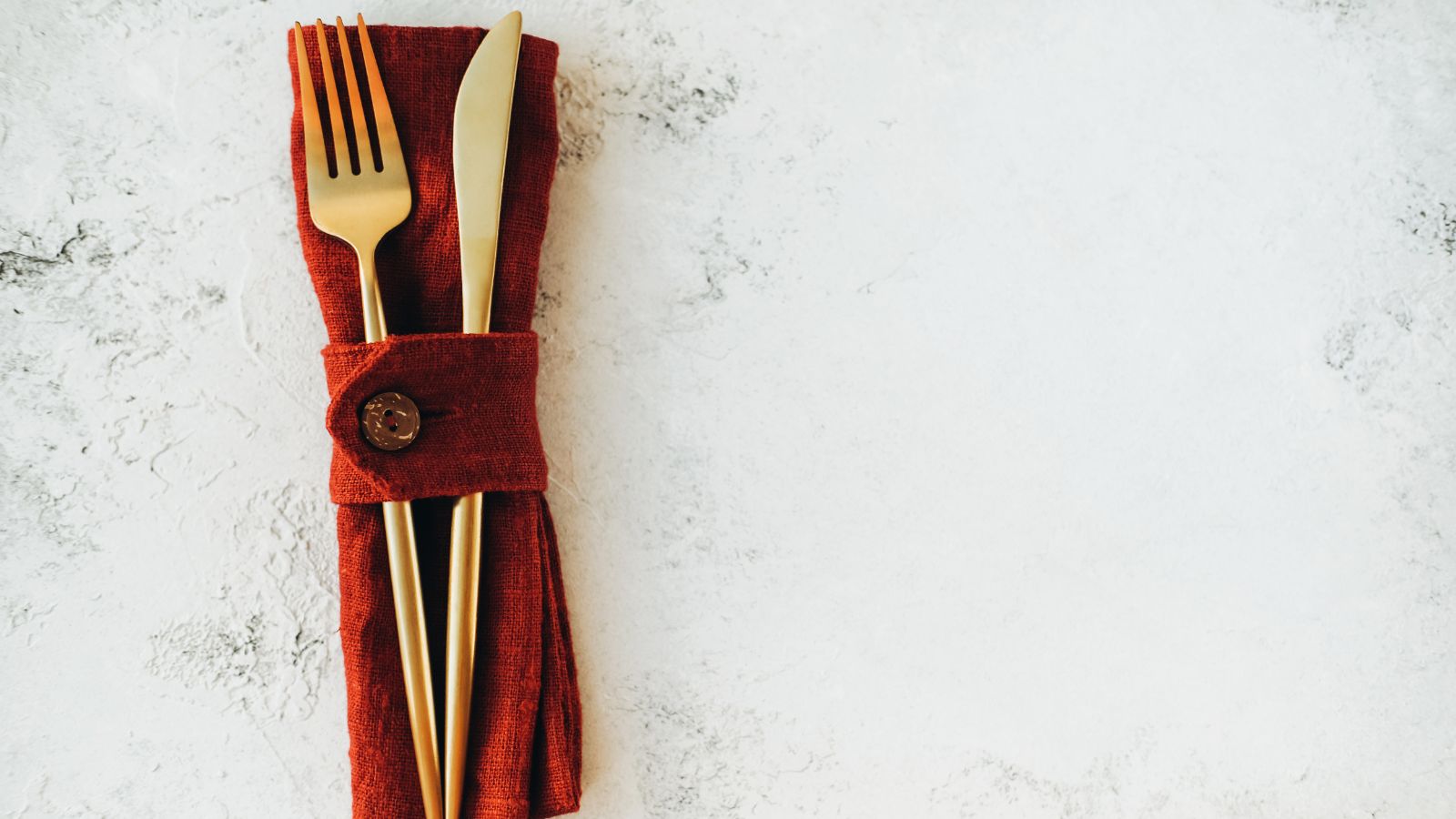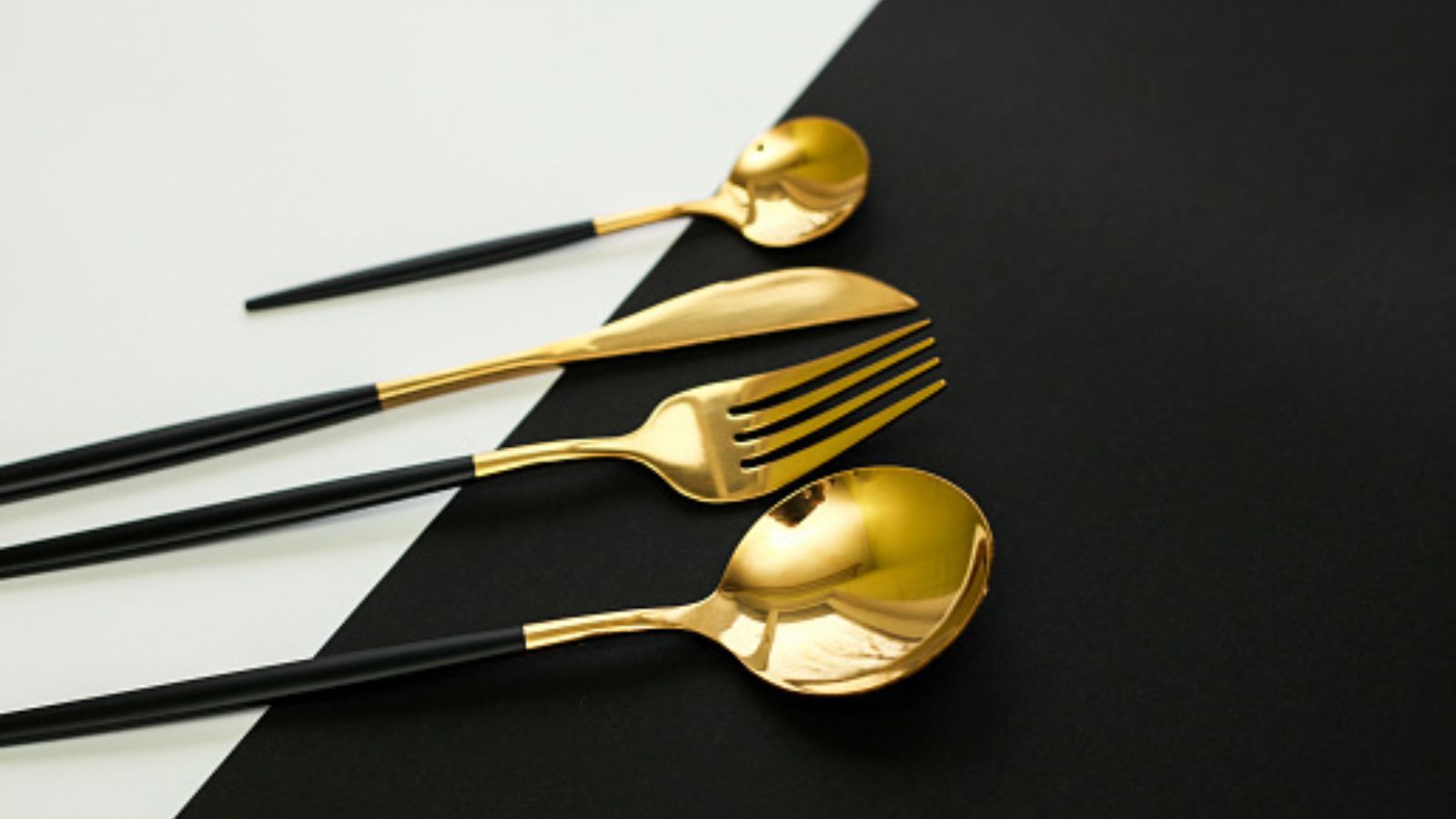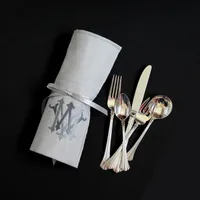How to store flatware – 4 solutions to stop scratches
The material of your flatware could determine how you store it, experts warn


We might not pay too much mind to our flatware, but these kitchen essentials need specific storage solutions to prevent irreversible damage that could render them unusable, experts say.
No matter if you have spent good money on the best flatware sets, or have a solid set of everyday utensils, it pays to store them correctly to prevent scratches and blunt knives.
While a utensil drawer divider is one option, there are better alternatives that could provide better protection for even your finest sets, and keep your staple selection serving you for years to come.
How to store flatware to prevent scratching
From handy storage containers to keeping metals apart, here is what the experts do to prevent scratching and make cleaning simpler.

1. Use a flatware organizer
The obvious go-to for organizing kitchen drawers with flatware is to pick a utensil organizer, such as this from Amazon, suggests Parveen Garg, manager at OlaClean.
‘This is the best way to store flatware, as it will keep the pieces separated and prevent them from scratching each other,’ he explains. ‘There are many different types of flatware organizers available, so you can find one that fits your needs and style, and be sure to clean it out regularly to prevent debris scratching your pieces,’ he adds.

Parveen Garg is a dedicated and experienced manager in the cleaning business, specializing in leveraging my extensive knowledge of cleaning practices and products to ensure exceptional cleanliness solutions.
2. Keep flatware in place with magnetic strips
Although magnetic strips are more commonly used for storing your best kitchen knives to keep them sharp, they can be mounted inside drawers to keep your prized flatware straight and safe from damage, highlights Karina Toner, operations manager at Spekless Cleaning.
Design expertise in your inbox – from inspiring decorating ideas and beautiful celebrity homes to practical gardening advice and shopping round-ups.
This is a good storage solution for your more expensive sets that you have spent good money on.
3. Keep flatware safe in a flatware roll
One of the best kitchen organizers for sharp or expensive utensils and flatware is a flatware roll, says Aaron Green, homeware expert and owner of home blog Essential Homes and Garden: ‘Another way is to use a flatware roll. This is a fabric roll where each piece has its own slot, preventing them from touching and scratching each other. Storing flatware incorrectly can definitely lead to scratches and blunting. When the pieces are jumbled together, they can rub against each other causing scratches.’
Linen Flatware Roll | $69.99 from Etsy
This customizable linen flatware roll is hand-made in the US with US-sourced materials. It also comes in multiple sizes, perfect for your prized flatware from special occasions.
4. Soften storage with silicone liners
If you have larger, more open storage for your flatware, then you can soften the blow by lining your storage compartments with silicone mats to add a protective layer between the flatware and the storage surface,’ Karina Toner, cleaning expert, suggests.
We like these neutral silicone liners from Amazon that can be cut to size for whole drawers, or individual organizer slots.
How to organize different metal flatware

Different flatware has different needs. Plated flatware, for instance, needs to be protected to prevent fading, while stainless steel is hardy enough to last in any kitchen drawer, as Parveen Garg and Karina Toner explain:
- Silver flatware: Silver flatware should be stored in a dark, cool place to prevent it from tarnishing.
- Gold flatware: Gold flatware should also be stored in a dark, cool place. However, it is important to avoid storing gold flatware near other metals, as this can cause the gold to tarnish.
- Plated flatware: Plated flatware should be stored to prevent the plating from rubbing off. This means storing it in a separate drawer or cabinet from other metal flatware.
- Stainless Steel: Most common flatware is made of stainless steel, which is generally durable and resistant to staining and corrosion. However, stainless steel can still scratch, so it's a good idea to separate pieces to prevent contact.
- Wooden or Plastic: Flatware with wooden or plastic handles needs protection from moisture and temperature fluctuations. Keep these items dry and consider storing them separately from metal components.
- Antique or Delicate Pieces: If you have antique or delicate flatware, take extra care. Store these items in dedicated containers with soft lining to prevent damage.
FAQs
How do you store flatware in cabinets?
If you don't have drawer space, you can store flatware in sealed, divided boxes in cabinets to keep them protected. Alternatively, for less expensive flatware, you can store them upright in a container. Try to store them handle up where possible, with a soft protective layer at the bottom of the pot to prevent the utensils from blunting – this prevents any injuries when you reach in to grab something.
How do you store cutlery for long-term storage?
If you are packing utensils away for long-term storage, use a sealable container with dividers to keep the different types of flatware separate from one another. It is also a good idea to have a container lined with a soft fabric such as velvet to help prevent scratches and blunting when moving the box around.
Although these storage ideas may seem a little over-the-top for something as mundane as flatware, not storing them correctly means you will, eventually, need to replace them, Karina Toner, cleaning expert, warns.
‘Storing flatware pieces in a jumbled or haphazard manner can cause them to rub against each other. Over time, this friction can lead to scratches on the surfaces of the flatware. The scratches not only affect the appearance but can also create areas where dirt and residue can accumulate, making cleaning more difficult,’ she explains.

Chiana has been at Homes & Gardens for two years and is our resident 'queen' of non-toxic living. She spends most of her time producing content for the Solved section of the website, helping readers get the most out of their homes through clever decluttering, cleaning, and tidying tips. She was named one of Fixr's top home improvement journalists in 2024.
